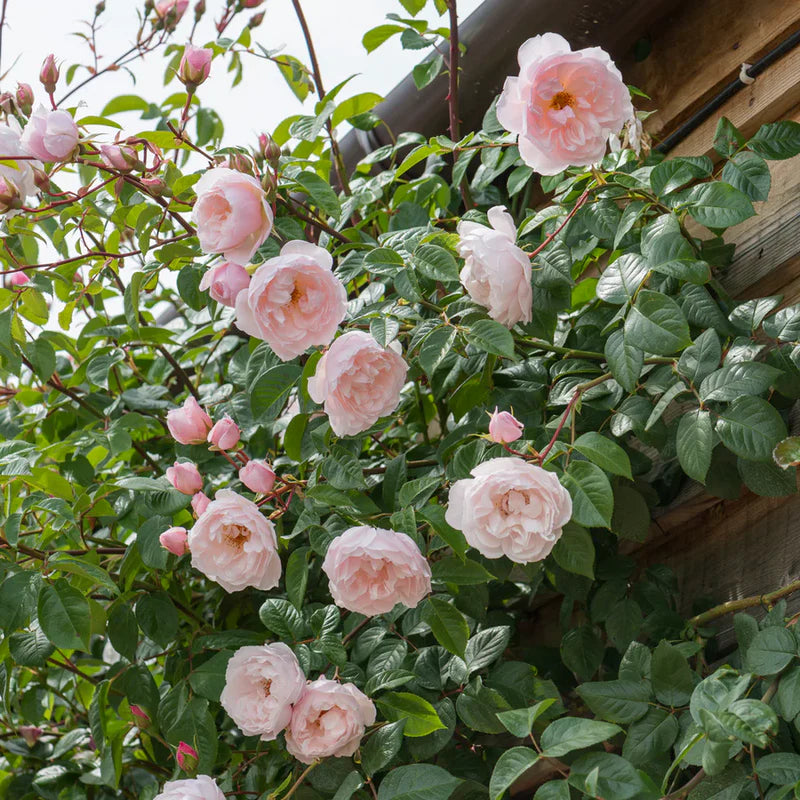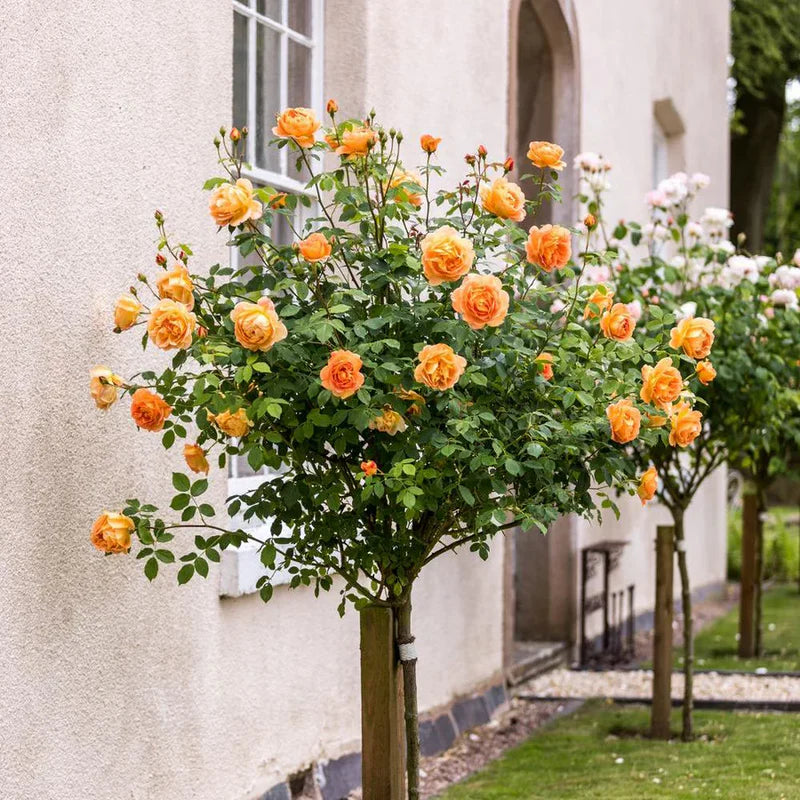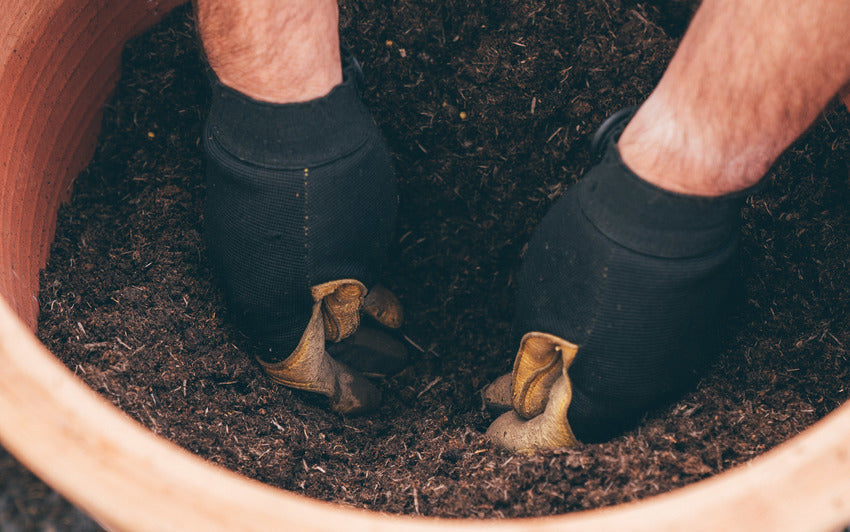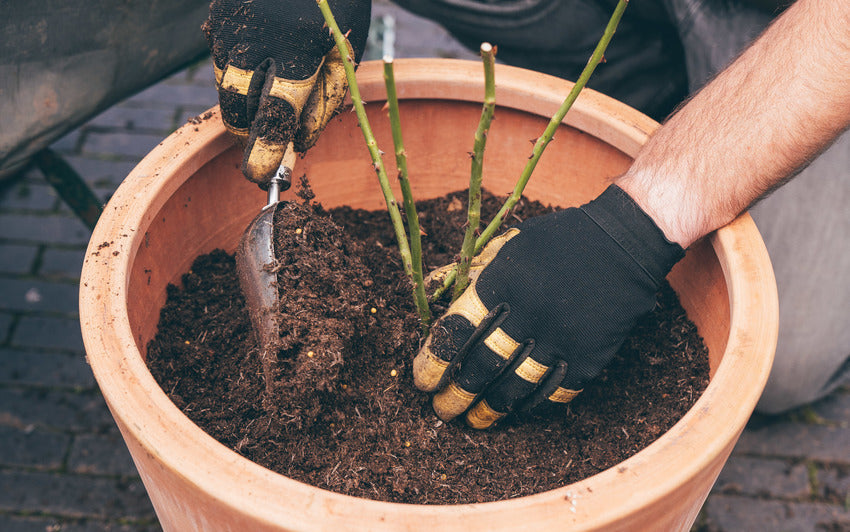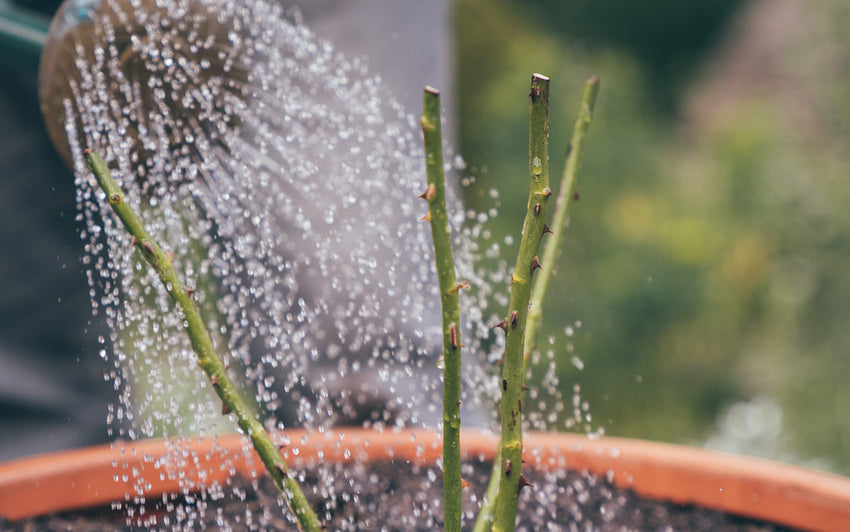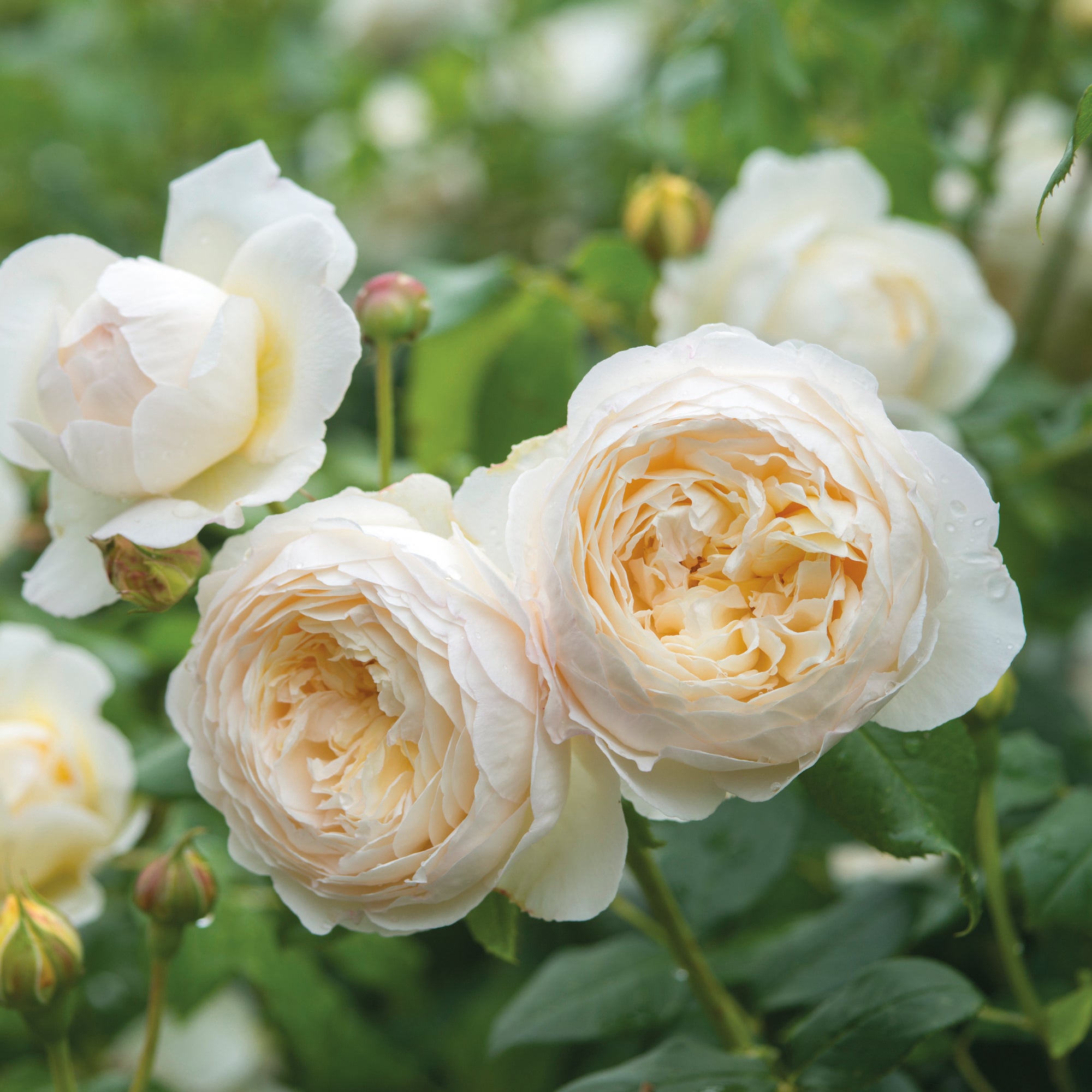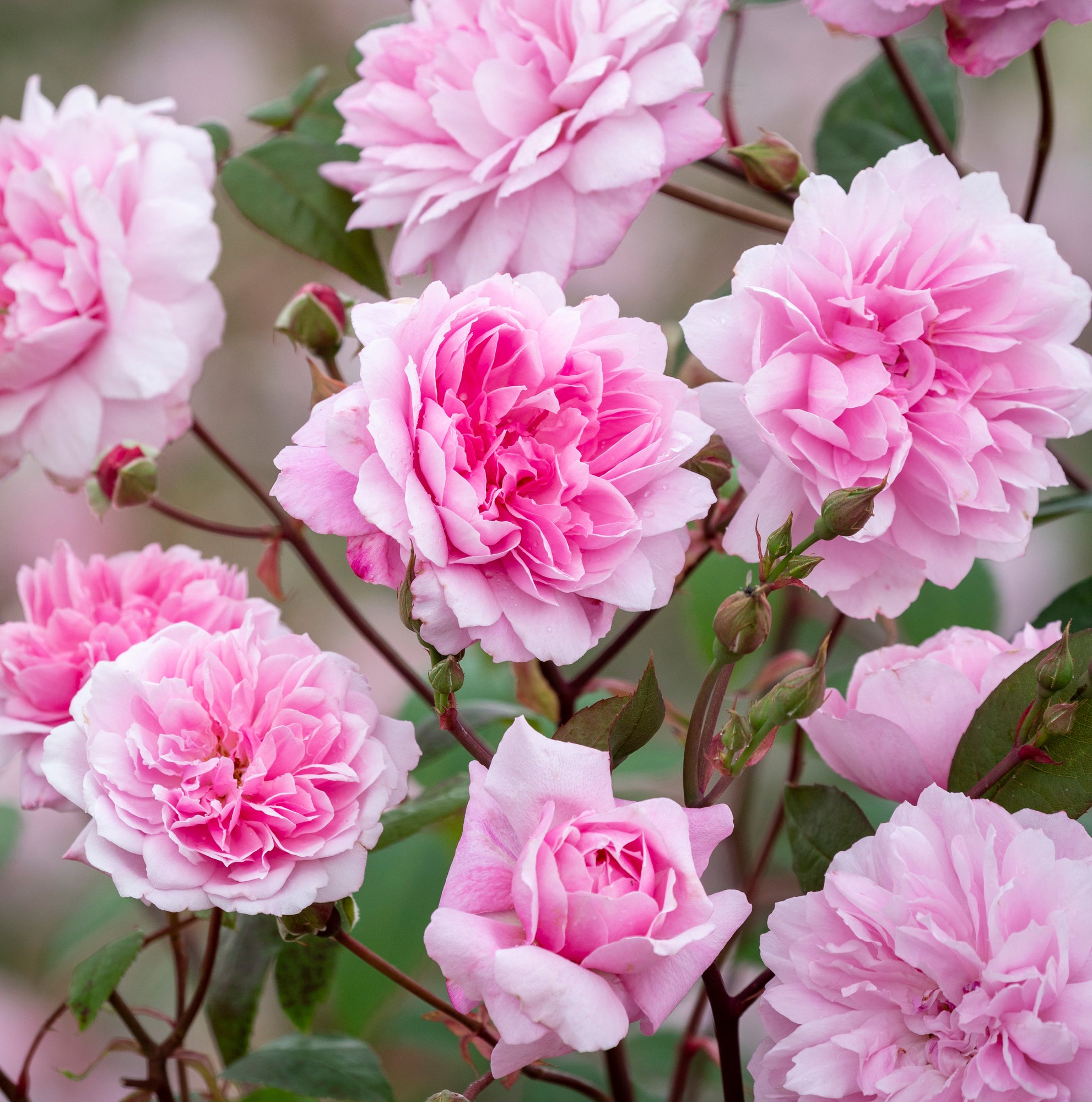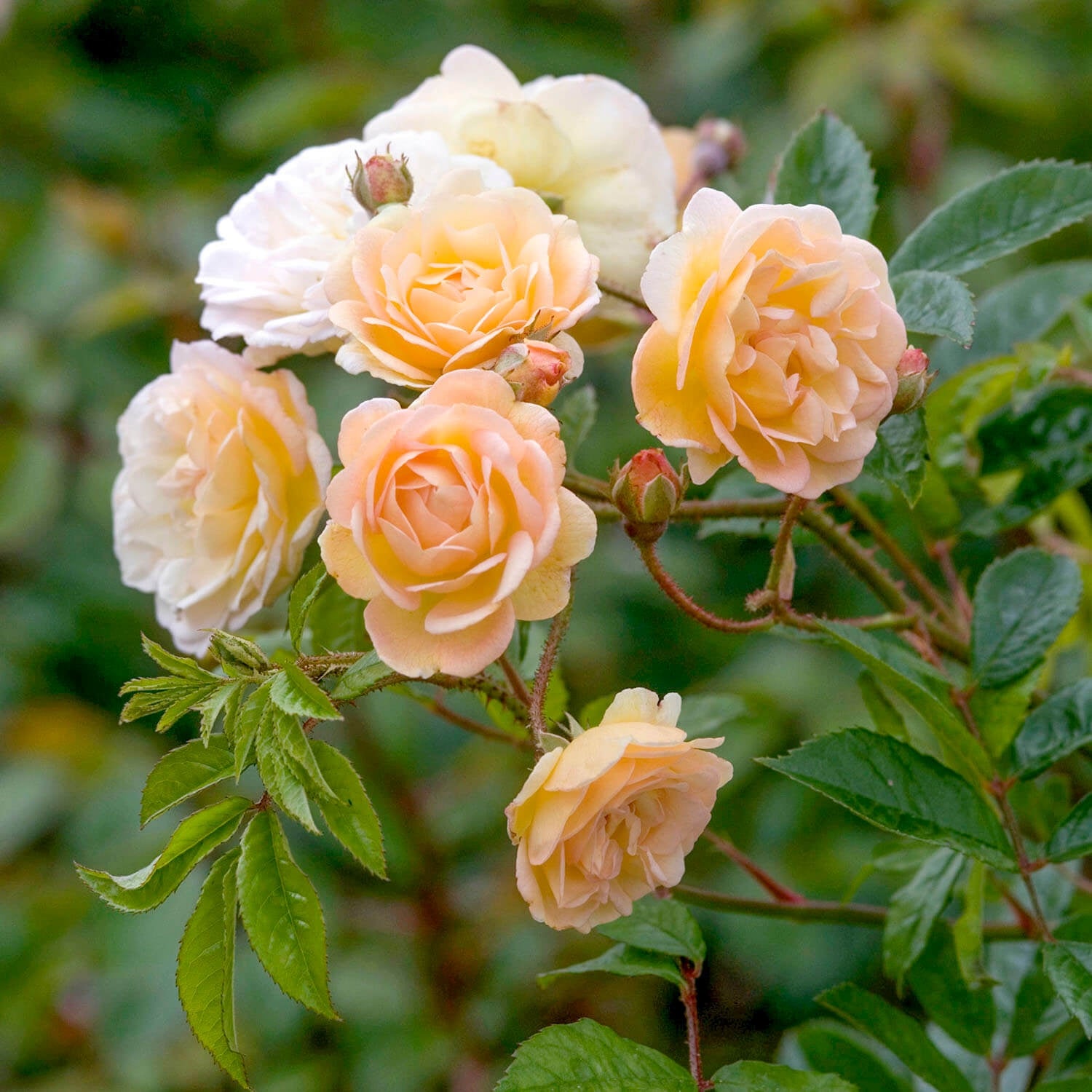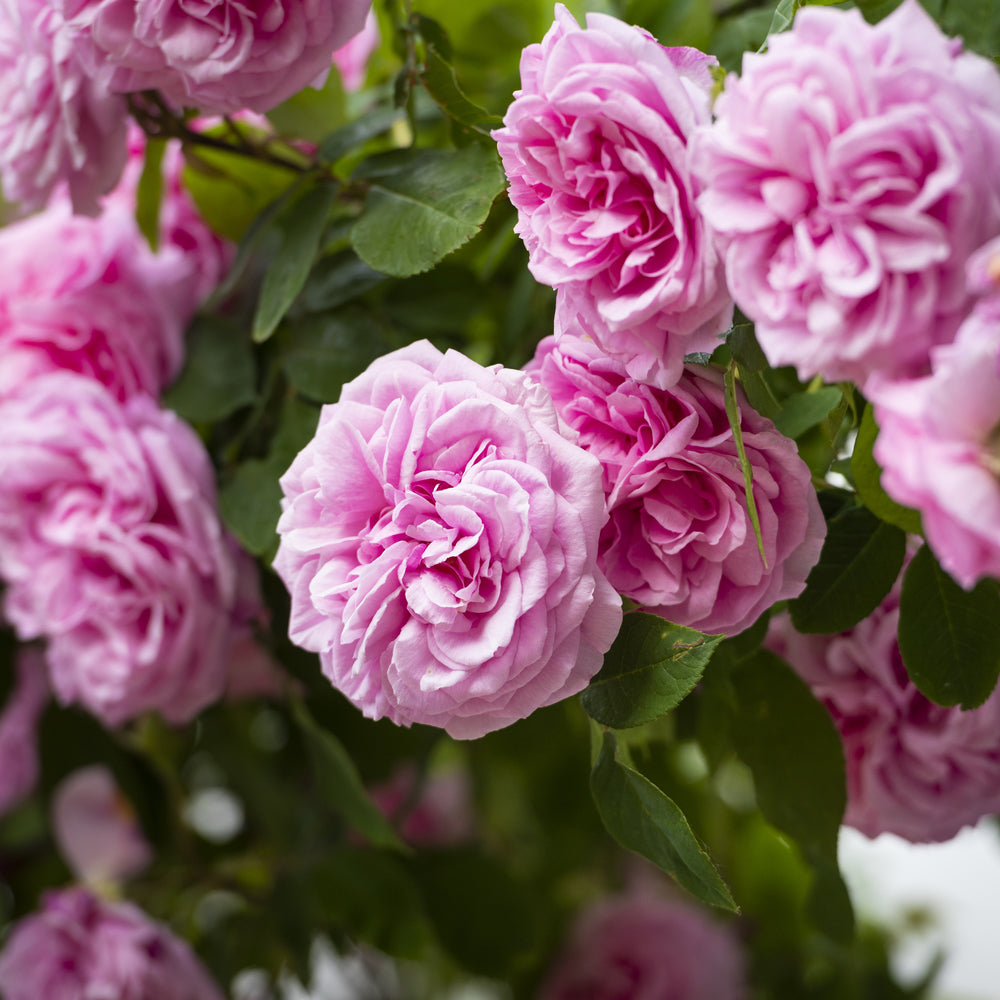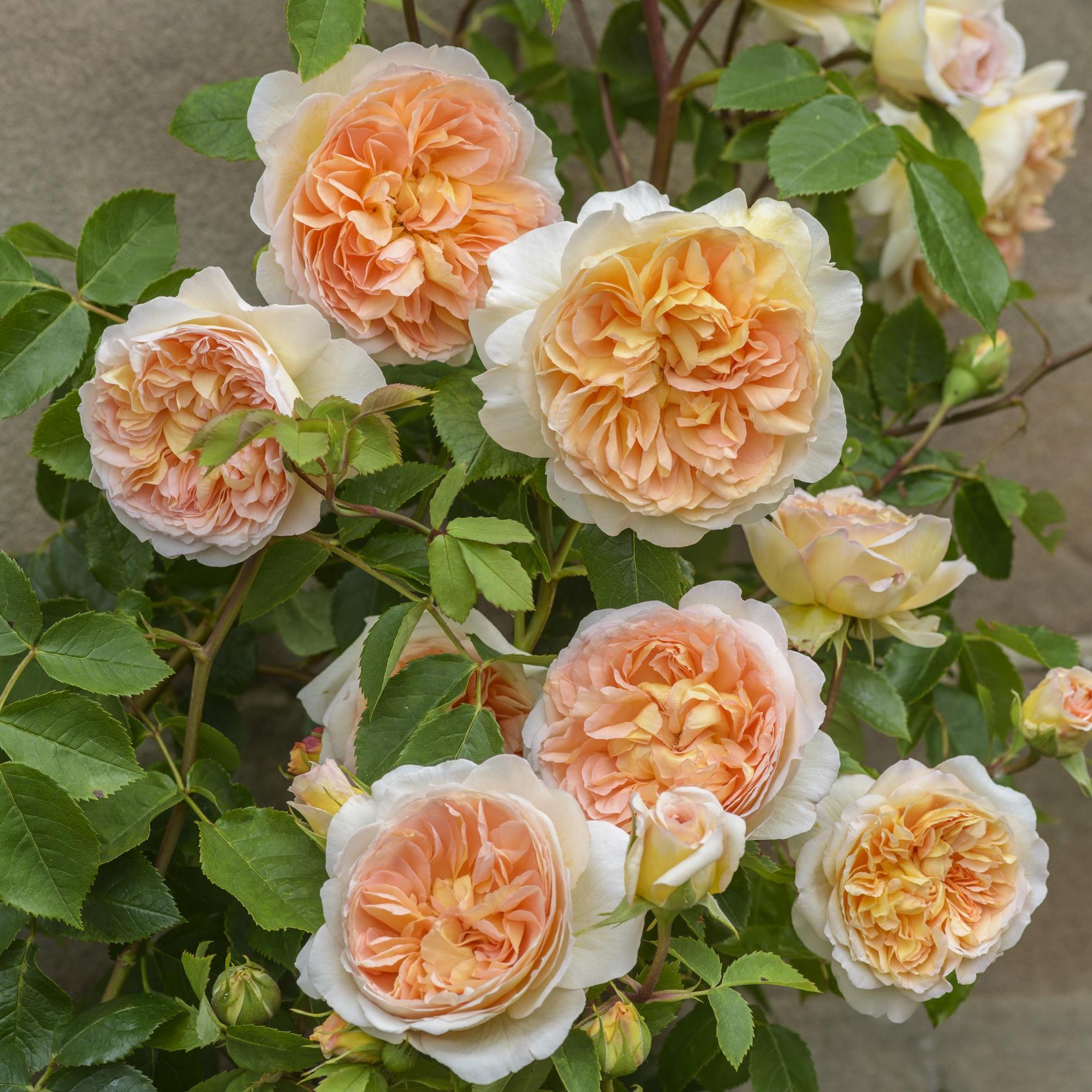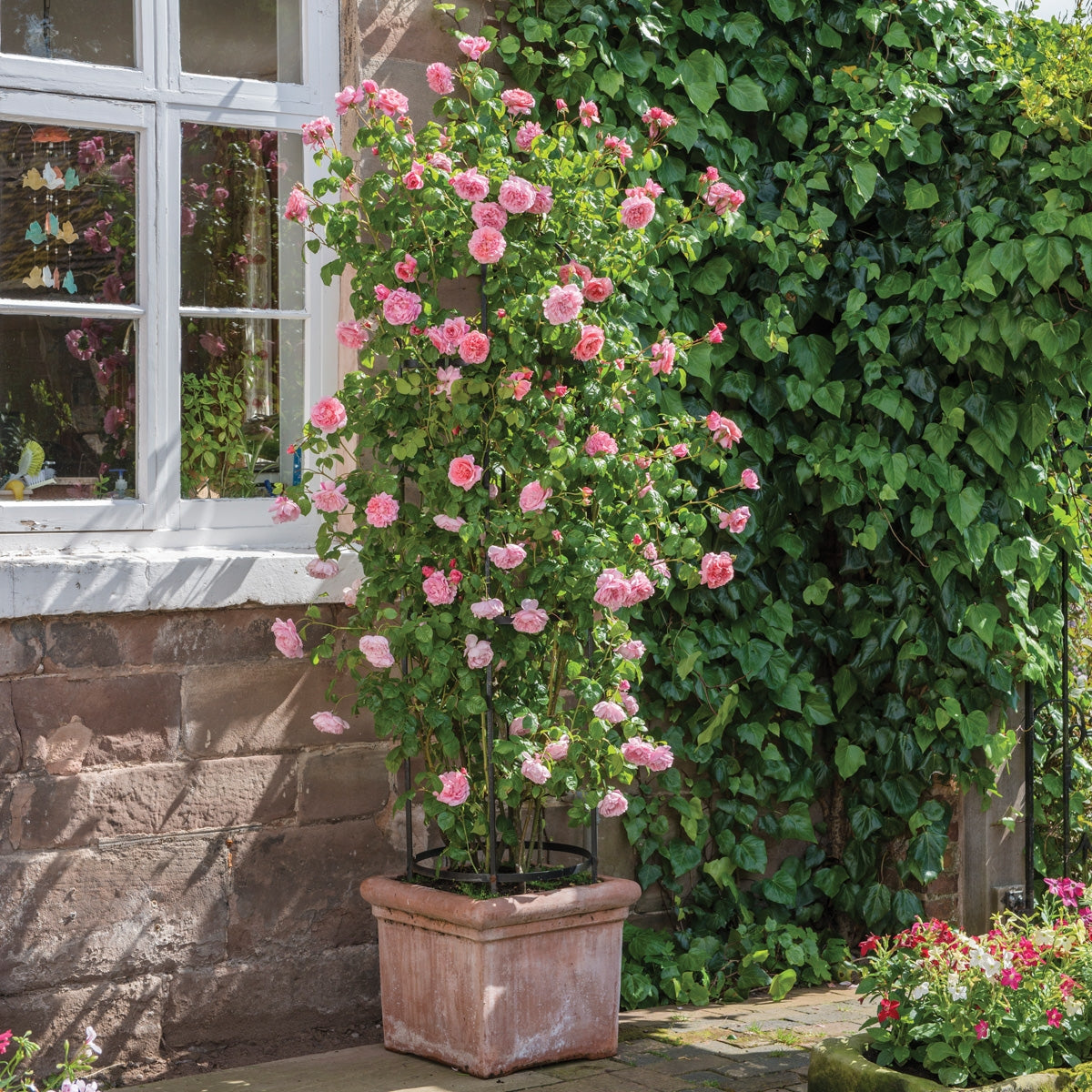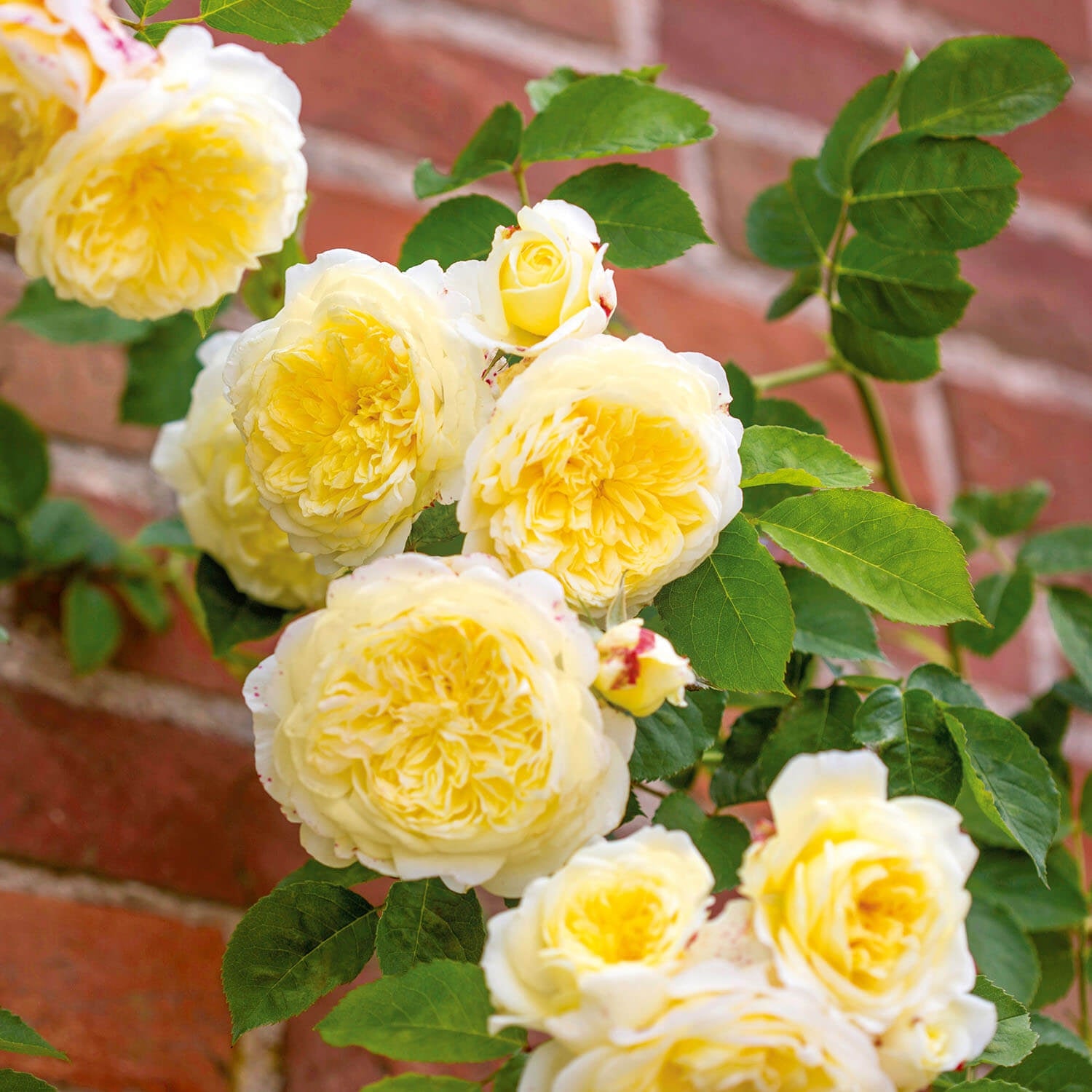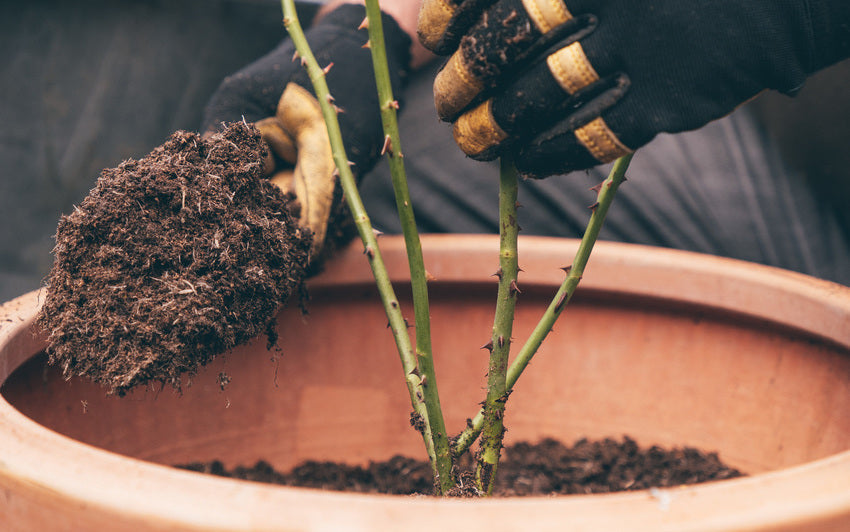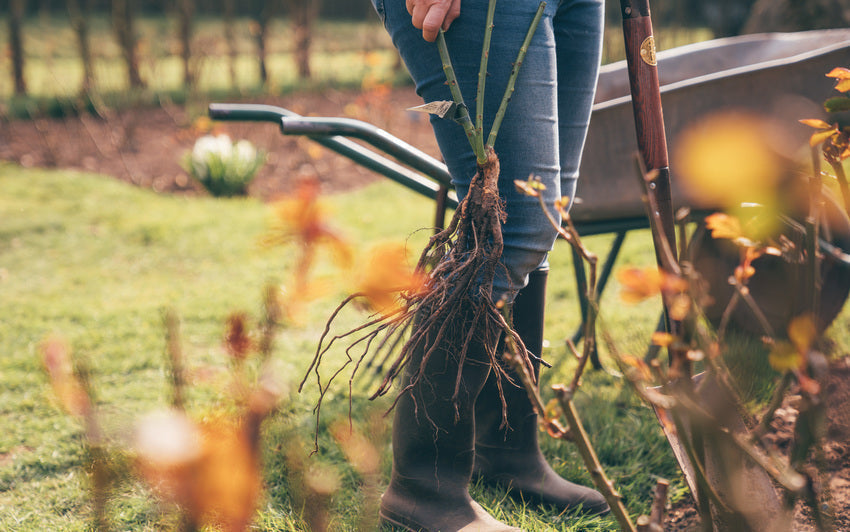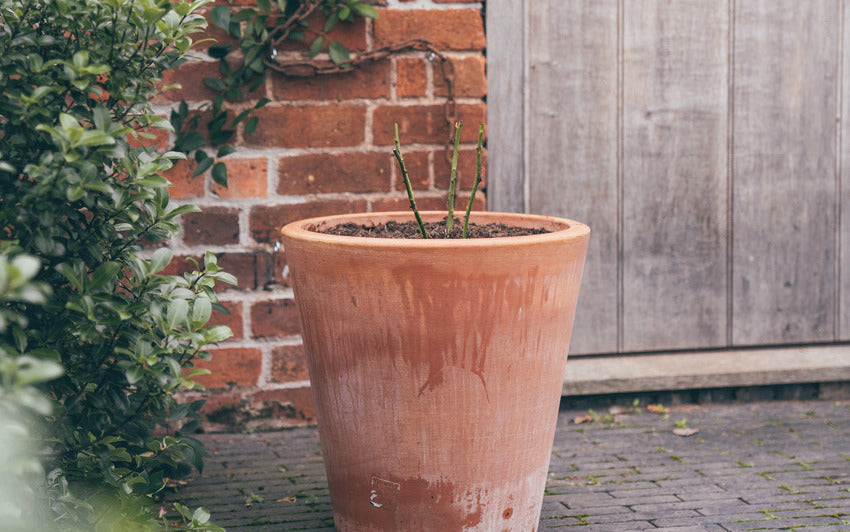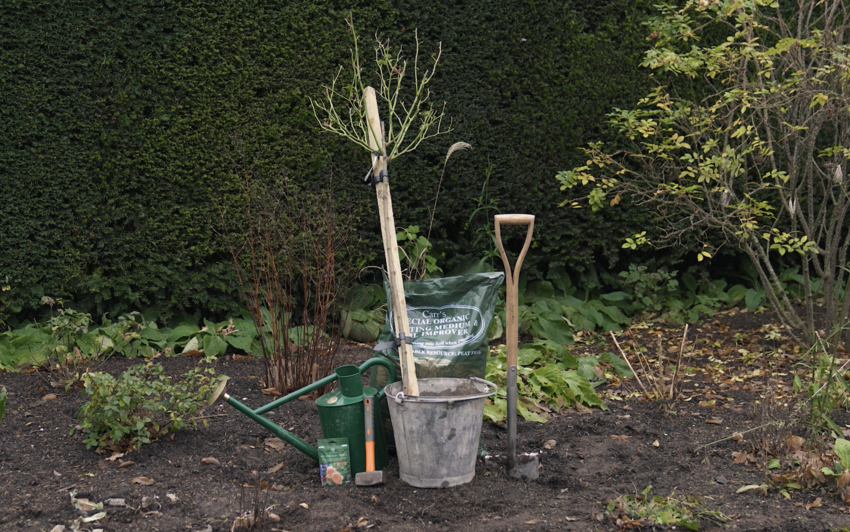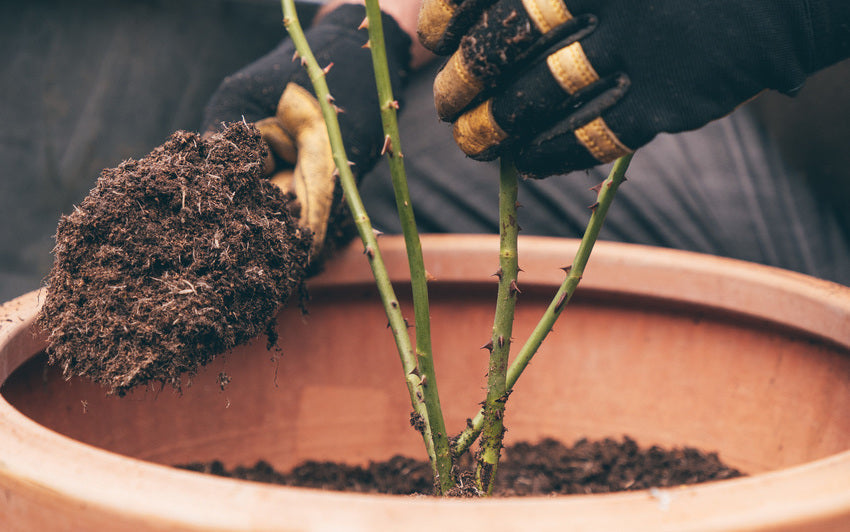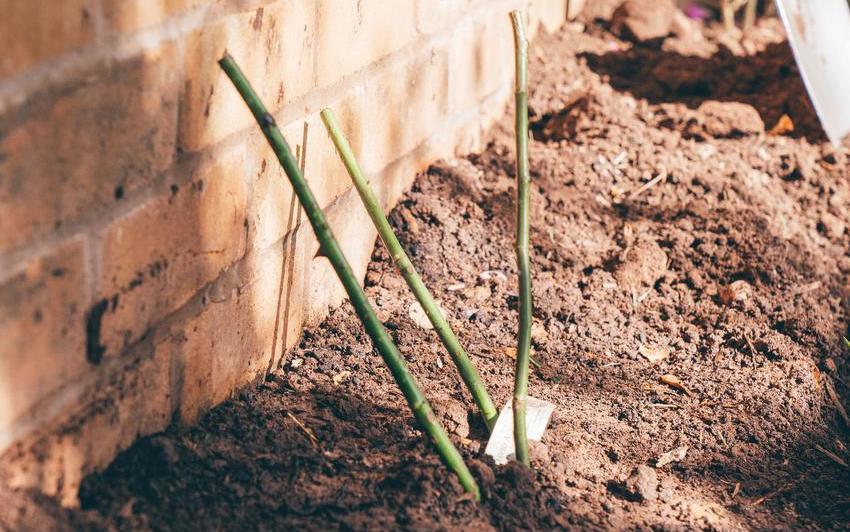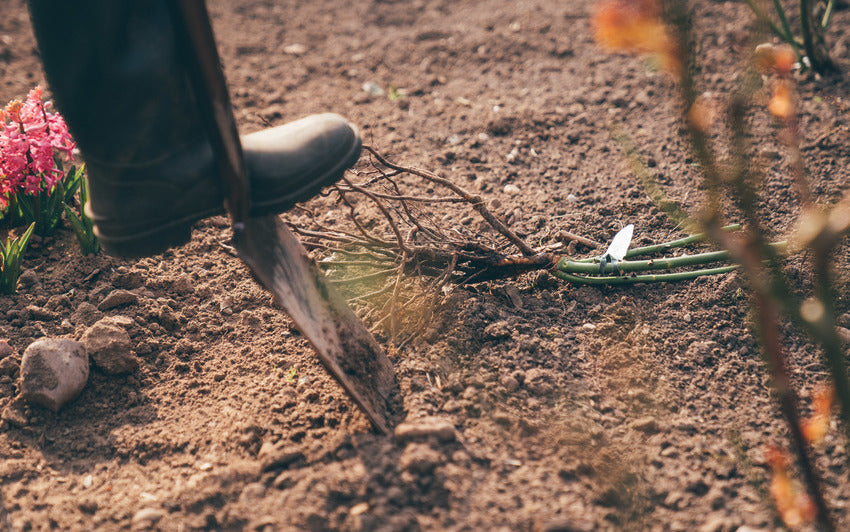Planting Bare Root Climbing Roses in a Pot: Step-by-Step
Bare root climbing roses bring vertical grace and fragrance to patios, terraces and courtyards, creating structure and height where space is limited. When planted carefully in a large container, they will flourish and flower generously, rewarding you with arching stems covered in blooms from early summer through to autumn.
The best time to plant bare root climbing roses in a pot is during their dormant season, from late autumn to early spring. Planting during this period allows the roots to settle before growth begins, ensuring a strong start once the warmer months arrive.
Your Chosen Rose:
Spade
Gardening Gloves
Watering Can
- We recommend Haws
Soil Improver or Well-rotted Manure
- We recommend, John Innes No. 3, high-quality multi-purpose compost or Carr’s Special Organic Soil Improver
Additional
- David Austin Mycorrhizal Fungi
- Large bucket of water
- Gravel, broken crocs or re-used polystyrene blocks
- Terracotta pot or similar of 60 x 60 cm (around 90 litres)
- Wheelbarrow
Climbing roses have long, vigorous roots and need plenty of space to grow. Choose a pot with a minimum internal dimension of 60 x 60 cm (around 90 litres) and ensure it has several good drainage holes. Place a layer of gravel, broken crocks or re-used polystyrene at the bottom to aid drainage and prevent waterlogging.
A sturdy, frost-resistant container is essential, as climbing roses can become heavy once established. Position it where it will not need to be moved later.
Only climbing roses reaching up to 8 feet (2.5 metres) in height are suitable for growing in pots. More vigorous varieties that exceed this height are best planted directly into the ground, where their roots have room to spread freely.
Use a rich, well-balanced mix that offers both nutrients and drainage. A 50/50 combination of John Innes No. 3 and high-quality multi-purpose compost works perfectly. As you fill the pot, press the soil down lightly to remove air pockets, keeping the mix firm yet open enough for air and moisture to circulate.
Before planting, soak your bare root rose in a bucket of water for at least two hours to rehydrate the roots. Just before planting, sprinkle Mycorrhizal Fungi directly onto the roots. These beneficial fungi form a natural partnership with the rose, helping it establish quickly and absorb nutrients efficiently.
Planting Your Rose
Adding Support
A climbing rose will need a strong frame, obelisk or trellis for support. Insert it into the pot at planting time to avoid disturbing the roots later. As new shoots grow, tie them in loosely with soft garden twine, training them outward to encourage flowering along each stem.
Choosing the Right Spot
Place your pot in a sunny, sheltered position, where it will receive at least four hours of direct sunlight each day. In very warm areas, light afternoon shade can help protect the foliage. Make sure the pot stands securely, as tall climbers can become top-heavy in strong winds.
Aftercare
Keep the soil consistently moist, particularly during dry spells, but never allow it to become waterlogged. Over the winter, the rose will rest while its roots establish. As spring arrives, prune lightly to shape and tie in new shoots. With regular watering and a little care, your climbing rose will soon fill its frame with lush growth and fragrant, abundant blooms.
A Guide to Growing Climbing and Rambling Roses in Pots
Planting a climbing or rambling rose in a pot is one of the most effective ways to introduce height, fragrance and structure to smaller gardens, courtyards and terraces. Whether used to frame a doorway, create a flowering screen along a wall or soften the lines of an obelisk, these roses offer a remarkable display when given the right conditions.





